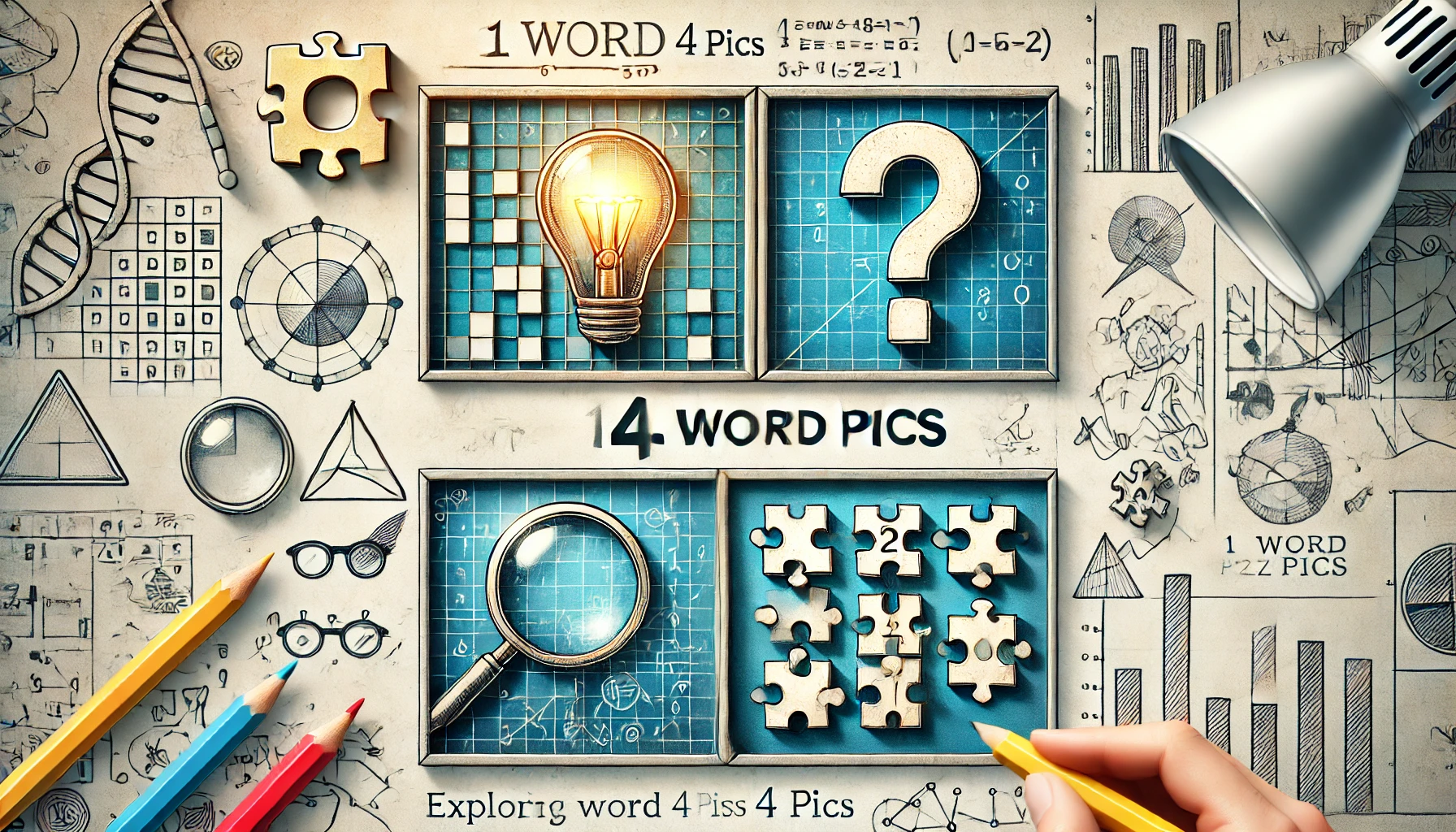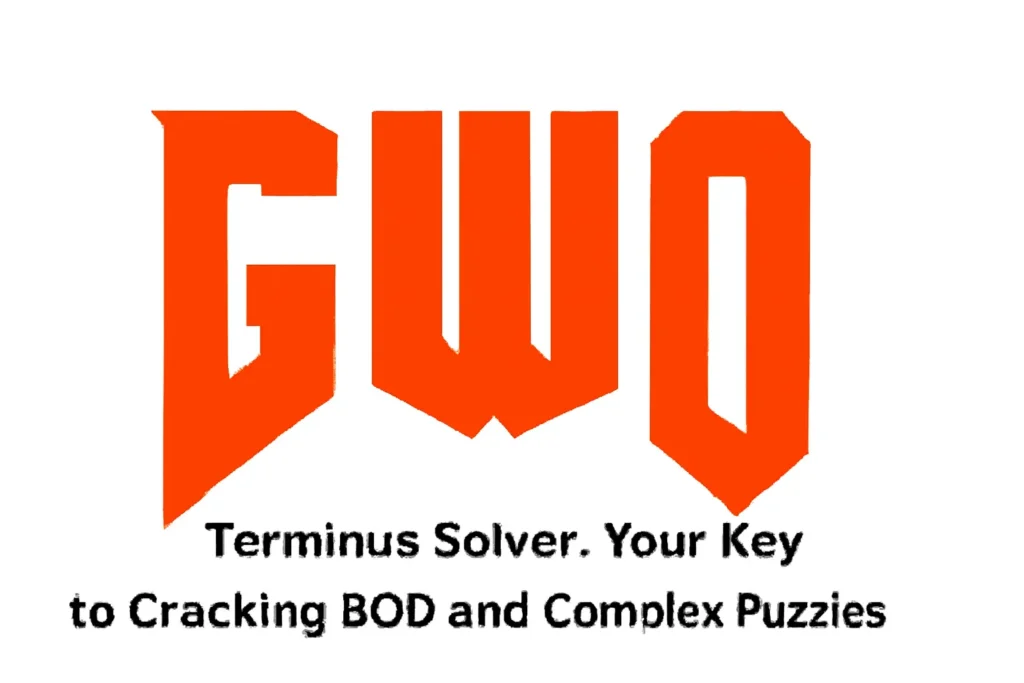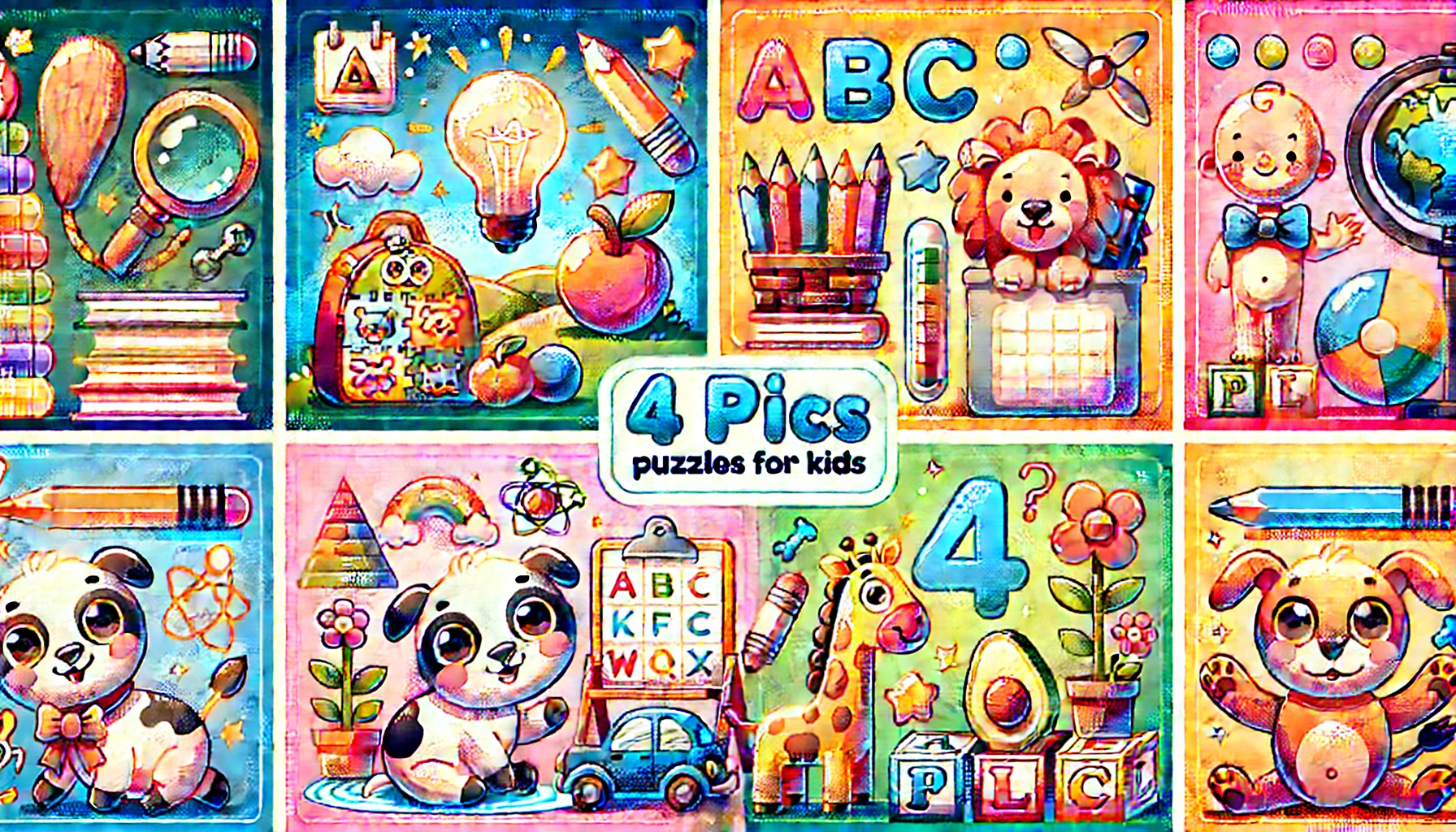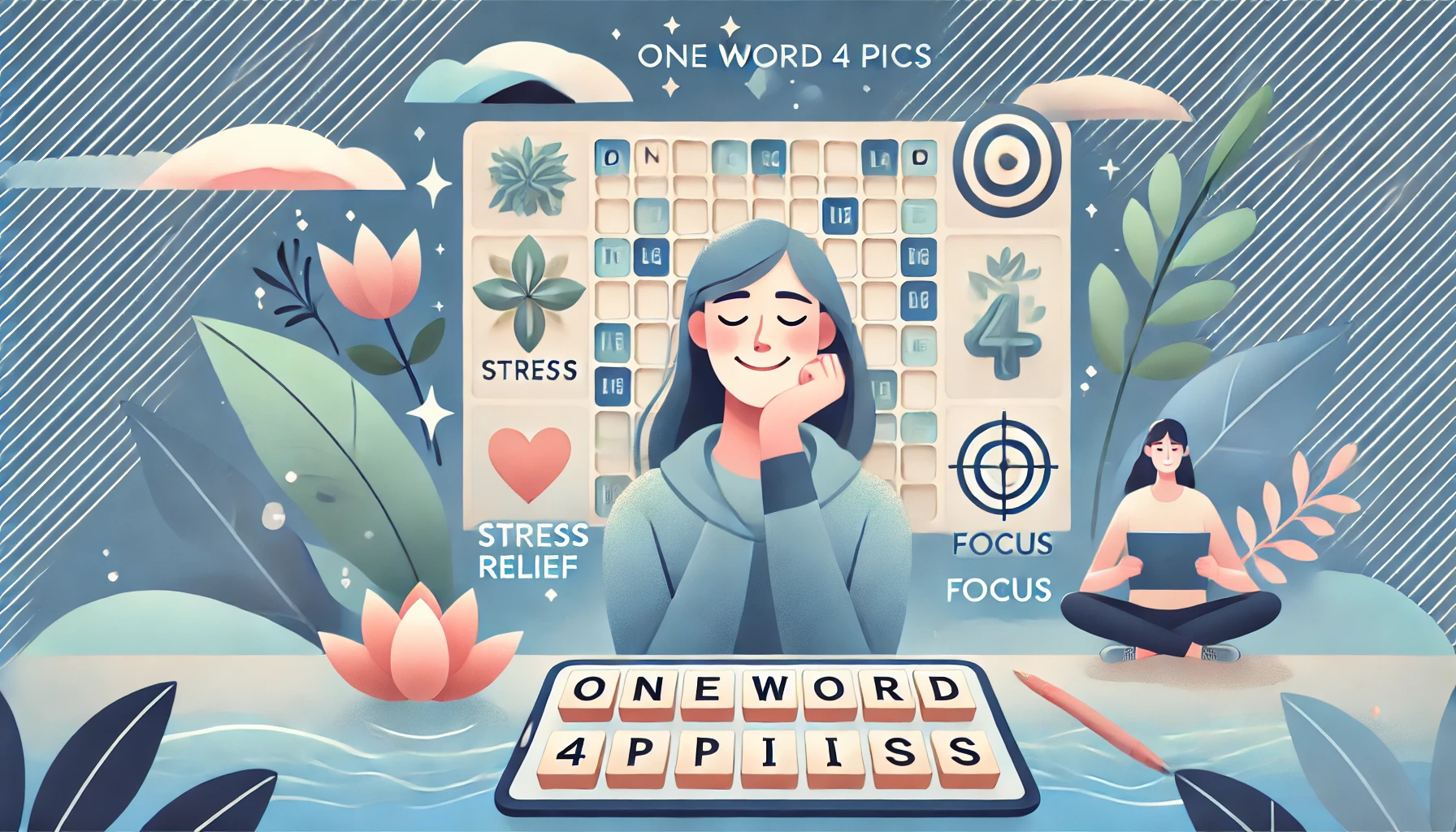Now Reading: Exploring the Hidden Math Behind 1 Word 4 Pics Puzzle Games
- 01
Exploring the Hidden Math Behind 1 Word 4 Pics Puzzle Games
Exploring the Hidden Math Behind 1 Word 4 Pics Puzzle Games

The Rise of Puzzle Games
Puzzle games have won the hearts of people for a long time, and in the modern world, mobile applications and Internet-based games have introduced different kinds of puzzles into our lives. An example of such games is the game called 1 Word 4 Pics, where the user is provided with four pictures and has to figure out the word that relates to all of them. At first glance, it may seem extremely easy, but there is more going on behind the scenes than one can imagine.
This article will explore the mathematical principles underlying these games. There is nothing to worry about; all this will be explained in simple language that is easy to understand. We shall discover the role of patterns, logic, probability, and combinatorics in these games. When it ends, you will look at these seemingly simple puzzles in a different light.

What is “1 Word 4 Pics”?
Let’s first see how the game works, and then we’ll delve into the math behind it. In 1 Word 4 Pics, four images are presented to you. The theme of these images is the same, and your task is to identify the one word that can unite them. For example, when you view a picture of a cat, a dog, a fish, and a bird, the term could be ‘animal’.
This game may seem simple, as it requires only guessing the words based on the picture; however, it involves a lot of mental work and logic. It needs some abstract thinking, deduction and even pattern recognition.
Mathematics Behind “1 Word 4 Pics”
Now, let’s delve into the mathematics behind the game. We’ll break it down into several key areas:
1. Combinatorics: The Art of Arranging Images
Combinatorics is one of the first mathematical concepts used in the game “1 Word 4 Pics”, a field of study that examines the power of combining, arranging, and selecting objects.
You are presented with four pictures in this game. These images may belong to a large pool of potential photos, each representing one or more categories (animals, food, places, etc.). The variety of image combinations that can be chosen is vast.
As an example, suppose that there exist 100 different images in the game. In order to calculate the number of possible sets of 4 pictures, you would use a combinatorial approach, which is expressed as:
C(n,k)=n!k!(n−k)!C(n, k) = \frac{n!}{k!(n – k)!}C(n,k)=k!(n−k)!n!
Where:
- nnn is the total number of items (in this case, the number of images),
- kkk is the number of items to choose (in this case, four images),
- “!” represents a factorial, which means multiplying all the numbers up to that number.
If there are 100 images in total, the number of ways to pick 4 images is:
C(100,4)=100!4!(100−4)!C(100, 4) = \frac{100!}{4!(100 – 4)!}C(100,4)=4!(100−4)!100!
This means that there are 3,921,225 different ways to pick 4 images out of 100. This highlights the complexity of the game and the vast number of possible image combinations that could appear.
2. Pattern Recognition: Connecting the Dots
Pattern recognition is an essential component of mathematics and logic, towards the center of which the 1 Word 4 Pics takes you. The goal of the game requires a player to find associations between the four pictures based on the word that unites them. It may not be apparent as math, however, it entails the brain to search for patterns, whether visual, categorical or abstract.
Pattern recognition is mathematical in the sense that it entails searching for similarities or correlations among various objects. The more you play, the more you come to recognize these patterns. To take an example, you can be shown four pictures of different fruits (apple, banana, pear, grape) and you think of a fruit.
3. Probability: Guessing the Correct Word
Every time in the game, you get a number of potential guesses to the word that relates to the pictures. And which is right, however? Here is where the probability would intervene. Probability is what defines the likelihood of an occurrence. For example, when you are provided with various alternatives of a word, the possibility of selecting the right word depends on the number of other options, as well as the amount of information you possess.
Assuming you are aware that the pictures are animal-related, then your chances of guessing the right answer are better than when you have no clue.
In a game such as 1 Word 4 Pics, with every guess you make, you are working on conditional probability, that is, the more wrong answers you can rule out with the help of the images you see, the higher the likelihood of you making a correct guess. The better you know some popular topics (e.g., food, sports, animals), the better your chance at guessing correctly.
4. Graph Theory: Exploring Connections
The other subdivision of mathematics that can be used to explain how such a puzzle as that of the 1Word 4 Pics could be solved is graph theory. Graph theory focuses on patterns between points (called vertices) in a network, represented by lines (called edges). The images in this game can be considered as vertices, and a linkage between them (words they have in common) can be called an edge.
Suppose every picture is one point of a graph. The edges between these points are the relationships to pictures (e.g., the relationships between a picture of a dog and a picture of an animal). To solve the puzzle, you are trying to find the shortest path on the graph that connects the images in a row using a word. This is a simplified description of how graph theory can be applied to a game like 1 Word 4 Pics.
5. Information Theory: Guessing with Limited Information
You never have all the information at any given time you play. There are only four pictures, and you are required to provide the word that you think unites the pictures. An illustration of where information theory applies is as follows.
The theory of information is concerned with the coding, transmission, and decoding of information. With a game like 1 Word 4 Pics, you are presented with a variety of pictures, and the goal is to correctly decipher the secret code, which is the word based on these pictures. The less apparent the link is, the more so-called information you have to analyze to make it understood.
The more complicated the images or theme, the more difficult it will be to decipher the word, and the more information you will need to scan. This is the idea that makes the puzzles so cool and challenging!
6. Cognitive Load: The Mental Effort of Solving Puzzles
Although this is not a strictly mathematical notion, the cognitive load plays a significant part in solving puzzles. Completing a task requires mental effort. Whenever you attempt to tackle the puzzle in 1 Word 4 Pics, you are always on the verge of managing the available capabilities of your mind.
Mathematically, cognitive load may be interpreted as the correlation between the complexity of pictures, the familiarity of the topic, and your knowledge. When the images are highly straightforward and the topic is ordinary (such as animals), then you have a minimal cognitive load. However, when the photos are of higher abstraction or less well-known, the mental load is greater.
7. Optimization: Making the Most Efficient Guess
Finally, there is something of optimization in “1 Word 4 Pics.” Your target is to find the correct word in the shortest time possible, and you can use previous experiences you had with similar puzzles to make the best guess. Here, the concept of a good algorithm comes into play. An algorithm is a procedure that solves a problem step-by-step, and the game becomes easier when you create a more efficient algorithm for locating the word.
As an example, you can make initial eliminations relying on obvious choices, depending on the images and then make some more accurate assumptions depending on the patterns that have been discovered in the other puzzles. With time, you perfect your process of making the right guesses within the shortest time, which in turn raises your future success.
Conclusion:
Although the 1 Word 4 Pics puzzle game is very easy, it involves a lot of mathematical concepts, making the puzzling game complex and interesting. The math behind the game takes you from combinatorics to probability and information theory, allowing you to enjoy the game more fully and solve the puzzles.
Therefore, the next time you get to play, be aware of the fact that many calculations are made behind the curtains. It may involve recognizing patterns, computing probabilities, or decoding information, and in any case, the game is a great example of math in real life.
These may be the hidden mathematical aspects of these puzzles, and understanding these factors may help us comprehend the addictiveness and enjoyment of these puzzles. The game is both logical and creative; thus, it works out the mind. Stay playing, and the math that is behind it all.
What does the aim of the 1 Word 4 Pics game puzzle involve?
The game objective is to figure out the single word that ties four pictures together. All four of these images have a definite theme, and gamers are to find out what word unites them.
How can you solve one word four pics?
To crack the puzzle, seek similarity or commonality among the images. Consider categories such as animals, food, or objects, and attempt to draw a parallel between the pictures based on what unites them.
Does “1 Word 4 Pics” have a strategy of improvement?
Practice does help, yes! The more that is played, the more one learns patterns. Additionally, you can also cross off the blatant answers before guessing with precision regarding the connections between the images.
Does math figure in 1 Word 4 Pics?
The game has a mathematical foundation, particularly in the fields of combinatorics and probability. The game is based on pattern identification, maneuvering through potential combinations, and making informed decisions with limited information available.










